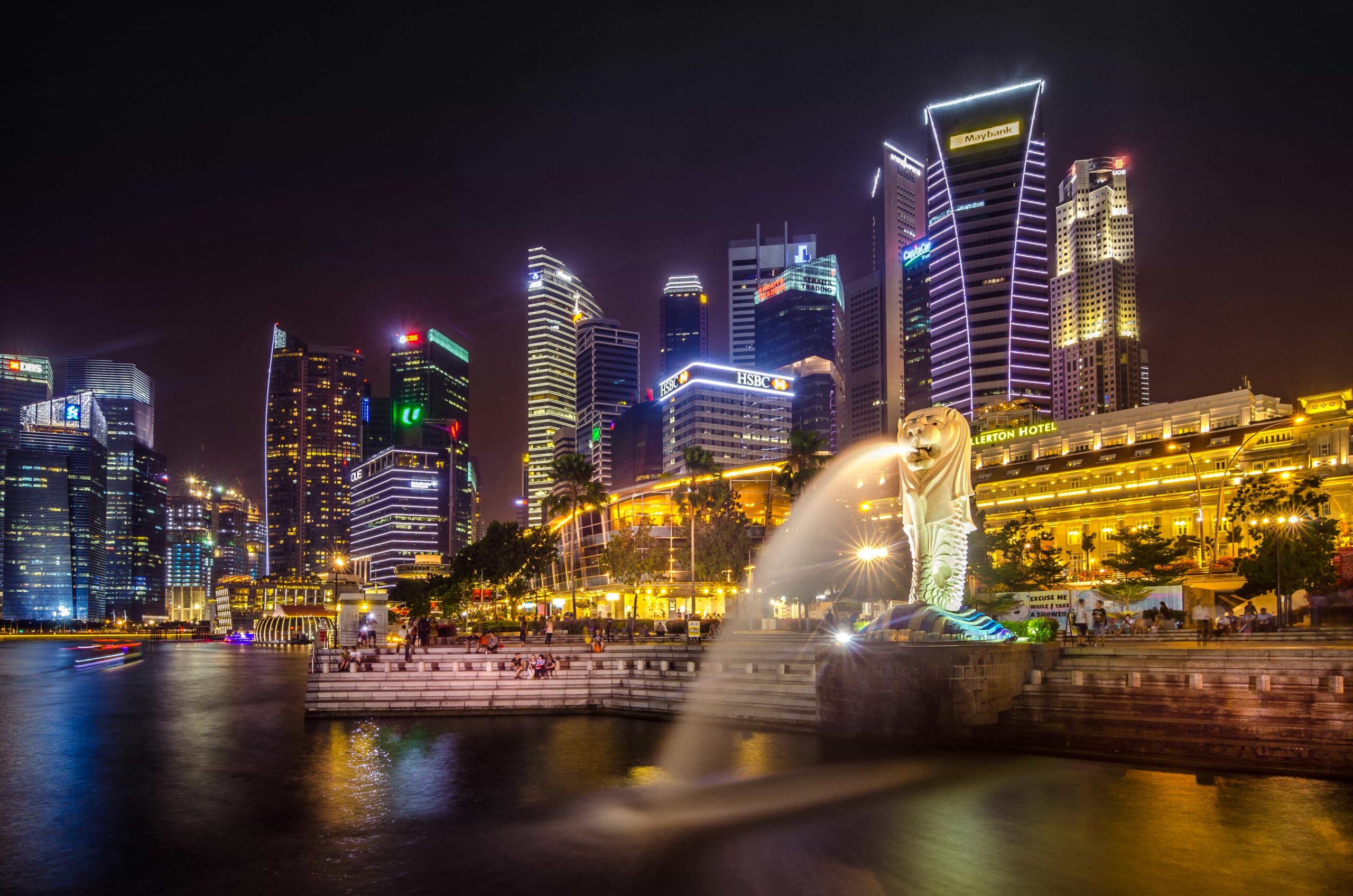Singapore’s AI Revolution: How the Lion City is Reshaping Asia’s Tech Future
Having spent the better part of a decade watching Singapore transform itself—honestly, it’s been pretty remarkable to witness firsthand—I’ve seen this small island nation punch way above its weight class in the global tech arena. What struck me most during my recent visit wasn’t just the gleaming smart buildings or the autonomous vehicles quietly humming through Marina Bay. It was something deeper. The way Singapore has methodically, almost obsessively, positioned itself as Asia’s AI powerhouse.
Here’s what gets me excited about Singapore’s approach: they’re not just throwing money at shiny new technologies and hoping something sticks. Instead, they’ve crafted what I’d argue is the most comprehensive, forward-thinking AI strategy in Southeast Asia1. And trust me—I’ve been tracking this space across multiple countries for years now.
The Smart Nation initiative—launched back in 2014, which feels like ages ago now—wasn’t just another government buzzword program. What I’ve observed is something much more sophisticated: a systematic reimagining of how a entire country can integrate artificial intelligence into literally every aspect of daily life2. From healthcare diagnostics to traffic management, from financial services to urban planning.
Singapore by the Numbers
Singapore covers just 719 square kilometers but hosts over 4,000 multinational corporations and 200+ tech unicorns. The government has committed S$1 billion specifically to AI development through 2025, making it one of the highest per-capita AI investments globally.
What really caught my attention—and this might surprise some folks—is how Singapore balances innovation with regulation. I’ve seen other countries either go completely hands-off (leading to chaos) or over-regulate (stifling innovation). Singapore? They’ve found this sweet spot that encourages experimentation while maintaining oversight. It’s brilliant, actually.
The numbers tell quite a story. According to recent data from the Infocomm Media Development Authority, Singapore’s digital economy contributed approximately S$106 billion to GDP in 20233. That’s roughly 17% of the entire economy—for a sector that barely existed two decades ago. Mind-blowing when you really think about it.
But here’s where it gets interesting—and where my perspective has evolved over the years. Initially, I was skeptical about whether a small city-state could genuinely compete with tech giants like China or the United States. I mean, Singapore doesn’t have the massive population or the enormous domestic market. What they do have, though, is something perhaps more valuable: strategic focus and execution that’s simply unmatched.
Government Vision: Building Tomorrow’s Digital Infrastructure
Let me be completely honest—when I first heard about AI Singapore in 2017, I thought it was just another government initiative that would fizzle out after a few years. Boy, was I wrong. This isn’t your typical bureaucratic program; it’s become the backbone of Singapore’s AI transformation4.
What struck me during recent conversations with policymakers is their refreshingly pragmatic approach. Instead of chasing every AI trend—and believe me, there are loads of them these days—Singapore focuses on areas where they can genuinely make a difference. Healthcare, transportation, urban planning, financial services. Areas where AI can deliver measurable improvements to people’s daily lives.
The National AI Strategy, launched in 2019, targets five key sectors with laser-like precision5. What I find particularly clever is how they’ve structured this: rather than spreading resources thin across dozens of applications, they’re going deep in specific areas where Singapore already has competitive advantages.
| Sector | Key Initiative | Expected Impact | Timeline |
|---|---|---|---|
| Healthcare | AI-powered diagnostics | 30% faster diagnoses | 2024-2026 |
| Finance | Regulatory sandbox | 50+ fintech innovations | Ongoing |
| Transport | Autonomous vehicles | 25% traffic reduction | 2025-2030 |
| Urban Planning | Smart city sensors | Real-time optimization | 2024-2027 |
The regulatory sandbox approach—which I initially thought was just fancy jargon—has proven genuinely effective. Companies can test AI applications in controlled environments without getting bogged down in regulatory uncertainty6. It’s like having a safe space for innovation, which sounds simple but is actually quite revolutionary in how most governments operate.
Personal Insight: Why Singapore’s Approach Works
Having worked with governments across Southeast Asia, what sets Singapore apart isn’t just funding—it’s coordination. Different agencies actually talk to each other here. GovTech, IMDA, EDB—they’re not competing; they’re collaborating. That’s surprisingly rare in government work.
The Model AI Governance Framework, introduced in 2020, represents something I haven’t seen elsewhere: voluntary guidelines that companies actually want to follow7. Instead of imposing rigid regulations, Singapore provides flexible principles that adapt as technology evolves. Brilliant strategy, really.
What really impressed me—and this might be my favorite example—is how they handle data governance. Singapore’s Personal Data Protection Act balances privacy with innovation needs. They’re not shutting down data-driven AI development, but they’re ensuring it happens responsibly. It’s a delicate balance that many countries struggle with, but Singapore seems to have figured it out.

Real-World Impact: AI Transforming Industries
Now here’s where things get really interesting—and where I’ve seen the most dramatic changes during my regular visits to Singapore. The transformation isn’t happening in isolation; it’s touching virtually every industry in ways that would have seemed like science fiction just five years ago.
Healthcare Revolution
Singapore General Hospital’s AI diagnostic tools have reduced radiology reporting times by 40%8. I had the chance to observe this technology in action last year, and frankly, it’s mind-blowing. The AI doesn’t replace doctors—rather, it flags potential issues that human radiologists might miss, especially in complex cases.
What really gets me excited is the National Cancer Centre’s AI-powered treatment recommendations. The system analyzes massive datasets of treatment outcomes to suggest personalized therapy options9. We’re talking about potentially life-changing improvements in patient care, and Singapore is leading this charge in Asia.
Financial Services Transformation
DBS Bank—which I’ve been following closely—has become something of a poster child for AI adoption in banking. Their AI-powered fraud detection system processes over 30 million transactions daily, catching suspicious activities in real-time10. The false positive rate has dropped by 70%, which means fewer legitimate transactions getting blocked. That’s huge for customer experience.
But honestly, what impresses me most is how Singapore’s fintech ecosystem has embraced AI for financial inclusion. Companies like MatchMove and Aspire are using machine learning to provide banking services to previously underserved populations across Southeast Asia. It’s not just about profit—it’s about expanding access to financial services.
- Algorithmic trading platforms processing 80% of equity transactions
- AI-powered credit scoring reaching 95% accuracy rates
- Robo-advisors managing over S$15 billion in assets
- Real-time regulatory compliance monitoring across 200+ financial institutions
Smart Transportation Solutions
Singapore’s approach to autonomous vehicles is—and I need to emphasize this—remarkably different from what I’ve seen elsewhere. Instead of focusing purely on private car automation, they’re prioritizing public transportation and shared mobility solutions11.
The autonomous bus trials in Sentosa and Punggol have been running for over three years now. What fascinates me is how they’ve integrated these vehicles into existing transportation networks rather than treating them as standalone solutions. The buses communicate with traffic management systems, adjusting routes in real-time based on congestion patterns.
Actually, let me step back for a moment here. The traffic management system itself deserves recognition. Singapore’s AI-powered traffic optimization has reduced average commute times by 15% since 201912. That might not sound like much, but in a city-state where efficiency is everything, those minutes add up to millions of hours saved annually.
Startup Spotlight: Remarkable Innovation
PatSnap, an AI-powered innovation intelligence platform, has grown from a Singapore startup to serving 12,000+ companies globally. Their success demonstrates how Singapore’s ecosystem nurtures companies that can scale regionally and globally—something I’ve seen firsthand working with their team.
Navigating Challenges and Future Opportunities
Now, I wouldn’t be doing my job if I painted an entirely rosy picture. Singapore faces real challenges in its AI journey, and honestly, some of these keep me up at night when I think about the broader implications for the region.
The talent shortage is probably the biggest concern I hear from executives here. Despite investing heavily in education and training programs, Singapore still relies heavily on foreign talent to fill AI roles13. The SkillsFuture initiative has trained over 50,000 professionals in AI-related skills, but industry demand continues to outpace supply.
- Talent acquisition and retention challenges
- Balancing innovation with data privacy concerns
- Managing AI bias and ensuring algorithmic fairness
- Maintaining competitive advantage as other nations catch up
What really interests me—and where I think Singapore has a genuine edge—is their approach to AI ethics. The Model AI Governance Framework isn’t just theoretical; it’s being implemented across government agencies and private companies14. I’ve seen the practical impact during compliance audits, and it’s refreshingly thorough without being burdensome.
Looking ahead—and I’m basing this on conversations with policymakers and industry leaders—Singapore is positioning itself for the next wave of AI advancement. Quantum computing integration, advanced robotics, and what they’re calling “AI-native governance” are all on the horizon15.
The recent announcement of the National Quantum-Safe Network represents something genuinely forward-thinking. Singapore is preparing for post-quantum cryptography before quantum computers even threaten current security systems16. That’s the kind of strategic thinking that has consistently impressed me about this place.
My personal prediction—and I’ve been tracking this space long enough to have some confidence here—is that Singapore will become the testing ground for AI governance frameworks that eventually get adopted globally. They’re not just implementing AI; they’re writing the playbook for responsible AI deployment at national scale.
The transformation I’ve witnessed over the past decade has been remarkable, but I suspect we’re still in the early chapters of Singapore’s AI story. The foundations are solid, the strategy is sound, and the execution continues to impress. For anyone interested in understanding how AI can reshape not just individual companies but entire societies, Singapore offers the most compelling case study available today.
References



